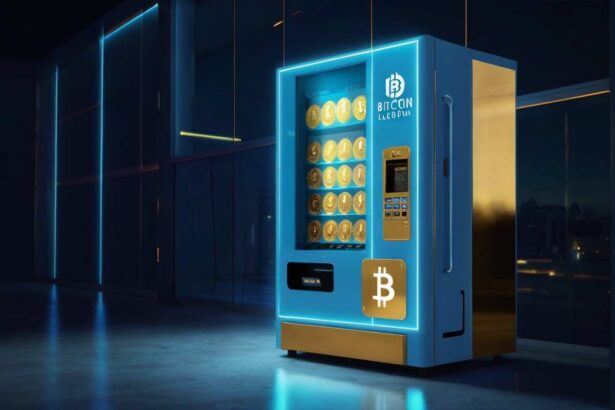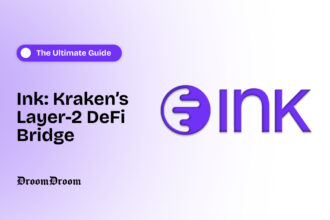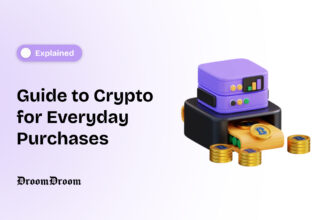In the intriguing finance world, here come flash loans. Think of an economic move that can give you hundreds of thousands of dollars just for signing some papers, and it will be done quickly. Enter the world of flash loans, where conventional lending practices are rendered obsolete in favor of instantaneous and independent financial transactions.
- How Flash Loans Work
- Flash Loan Platforms
- Benefits of Flash Loans
- Collateral-Free Borrowing
- Arbitrage Opportunities
- Complex strategies in one transaction
- Innovation in DeFi
- Rapid Capital Deployment
- Market Efficiency
- Risks of Flash Loans
- Smart Contract Vulnerabilities
- Market Risks
- Liquidity Risks
- Front-Running
- Regulatory Uncertainty
- Reentrancy Attacks
- Complexity and User Error
- Protocol Risks
- What Happens If One Fails to Pay a Flash Loan?
- Transaction Reversal
- No Collateral Loss
- Minimized Impact on the Borrower
- Transaction Fees and Costs
- Risk to Reputation
- Flash Loans Attacks
- Price Manipulation and Arbitrage Attacks
- Oracle Exploitation
- Reentrancy Attacks
- Liquidity Drain Attacks
- Deceptive Collateral Attacks
- Complex Flash Loan Cascades
- Conclusion
‘Flash loan’ is a type of uncollateralized, unsecured lending that emerged within the world of cryptocurrencies. A flash loan bears little resemblance to a normal form of lending. For shock lenders, no collateral backing up the borrower is required. The actual way of doing it, however, is to borrow the entire loan amount and repay it in a single transaction block on the blockchain.
What makes a flash loan so special is that it’s one block in and out. If the borrower fails to repay by the end of that block, then there is no contract, and it really doesn’t matter if he drops dead. The entire transaction will be automatically reversed as well and return to its original disposition before any exchange took place because everything happened within one single ethereal event (block), in this instance, just like a dream or maybe even more.
We will look at what a flash loan is, as well as its perils and potential benefits within the current decentralized system. Prepare yourself for an entry into the fast-paced, fast-money realm of flash loans.
How Flash Loans Work
Smart contracts are at the heart of flash loans, meaning that they operate on self-enforcing contracts whose conditions are embedded in computer codes. Here’s the play-by-play:
Initiation
The process of obtaining credit to buyback begins when a user enters into an interaction with a lending platform operating with it. Smart contracts make Ethereum the most used platform, and it offers a good playing field for flash loans.
Borrowing
The user applies for a significant amount of cryptocurrency to borrow. Now, for the big thing—it’s unsecured! However, flash loans tremble in this lack of collateral as they solely rely on code.
Execution of Operations
During the single transaction block, the borrower has access to the whole loan amount. The magic occurs here. Several functions carried out by the borrower include decentralized exchanges, arbitrage among multiple markets, and other operations.
Repayment or Reversal
The borrower should return the sum received along with any payment charges at the very end of a transaction block. Failure to do this leads to the cancellation of the whole transaction and undoing everything that would have been done. This provides a means of protection against abuse while ensuring that the rules are safe.
What stands out in this case is that the whole chain of events like borrowing, executing operations, and paying back the loan takes place within the same block. Speedy maneuvering, on the one hand, requires accuracy and no leeway of any sort.
Although it may sound like an attempt at robbing a bank, there are some risks and limits to flash loans. This means that all loopholes in smart contract codes should also be considered beforehand since every security loophole can be turned into an opportunity for breaching the agreements of the contract. Therefore, although the rush that characterizes flash loans is thrilling, it is accompanied by the silent saviors—care and planning—in this decentralized show dance.
Flash Loan Platforms
Let’s take a peek behind the curtain at some of the prominent players in the flash loan arena:
Aave
Flash loans were pioneered by a decentralized lending platform, Aave. It enables users to trade with some types of cryptos, like borrowing and lending. Many innovative deFi strategies started with flash loans on Aave.
Dydx
It is a decentralized exchange and loan platform, having flash loans on the Ethereum chain. The users’ borrowing assets without collars allow them to operate in a space of imaginative finance moves.
Uniswap
Despite being primarily known for its role as a decentralized exchange, Uniswap has also tried its hand at flash loans. Flash loans involve the use of the existing liquidity pools in Uniswap by users for this purpose.
Balancer
A second such platform, Balancer, offers its pool of liquidity for flash loans. Portfolio 130 helps users make their very own portfolio strategies, which makes it a playground for people inclined towards financial innovation.
Compound
The Compound is much preferred for lending and borrowing, but recently it has added a new feature, which refers to ‘flash loans’. There is no form of security for users to provide when borrowing assets. However, since every loan is closed during a single Ethereum transaction, it allows users to pay back their loans without any hassle or delay.
Cream Finance
Just like Aave, Cream Finance refers to a lending protocol that offers support for flash loans. The platform has numerous assets available for users to borrow to play around in a constantly changing DeFi space.
However, do not forget that every platform has its own characteristics and dangers. Users should be careful and possess a clear vision of the smart contract code as well as its peculiarities on a specific platform. In other words, it is equivalent to selecting arms in advance before monetary combat—making careful decisions.
Benefits of Flash Loans
Flash loans are equivalent to the daredevils in the financial world doing acrobatic acts that can lead to huge profits. Here are some of the key benefits that make flash loans stand out in the realm of decentralized finance:
Collateral-Free Borrowing
One thing that makes a flash loan unique is that it has no guarantee. This creates room for people who are unable to bring in substantial property as collateral. It’s like having a financial superpower but with no deposit.
Arbitrage Opportunities
Users can exploit such discrepancies in prices with flash loans. These are opportunities that traders can use to make fast yet possibly big gains without incurring large startup costs.
Complex strategies in one transaction
A flash loan enables the execution of many financial transactions in one block of transactions. It is very efficient, as it lets users use complex strategies without multiple transactions and related gas fees.
Innovation in DeFi
Financial experimentation has been taken to a new level with flash loans. These loans act as a foundation for developing new and groundbreaking apps that push the limits of DeFi.
Rapid Capital Deployment
The traditional loan process is cumbersome, taking several days before the loan amount is repaid. On the other hand, flash loans give immediate access to capital, enabling users to capture momentary changes in the dynamic environment of cryptocurrency markets.
Market Efficiency
Fash loans help smooth out market inefficiencies due to quick corrections of price inconsistencies that arise in decentralized markets. Their actions aid in ensuring that prices converge among various platforms for the same asset in a decentralized environment.
These advantages highlight the promising prospects of flash loans, but at the same time, it should be noted that this is a rather intricate and sophisticated issue. One must, however, understand the underlying technology and have an open mind about risk management when approaching such financial instruments. Flash loans are similar to a two-sided knife that is sharp but needs someone with skill to use it properly.
Risks of Flash Loans
The world of flash loans is exciting, but it also carries some risk. Let’s take a closer look at the potential pitfalls that come with the territory:
Smart Contract Vulnerabilities
The code on which flash loans operate is susceptible and can be used to carry out crimes if there are no measures put in place to check on them. Any weakness in the contract can result in an unexpected entry, alteration, or even loss.
Market Risks
Volatility is a characteristic of the crypto market. The implementation of flash loans may see rapid price changes, resulting in failed transactions or losses. The crypto market is volatile, and traders must learn how to maneuver through it.
Liquidity Risks
For flash loans, there is a significant dependency on cash fluidity within a distributed system. When there is not enough liquidity, large transactions become a problem, leading to some users’ failure to complete their operations.
Front-Running
Front-running is an issue in a more transparent, decentralized environment. However, malicious actors can view these transactions on the mempool and carry out similarly conducted trades before the actual flash loans, thus reducing the effectiveness or profitability of this operation.
Regulatory Uncertainty
In addition, regulative frameworks in the context of decentralized finances, including flash loans, are often ambiguous. Authorities might take time to catch up with this innovation, but it does not exempt users from legal and regulatory risks.
Reentrancy Attacks
Reentrancy is an attack vector that enables malicious actors to repeatedly enter the same function through flash loans. Such would result in unintended actions that may occasion inexplicable losses.
Complexity and User Error
Flash loans involve intricate methods that require knowledge of smart contract programming skills coupled with an appreciation for the intricacies of decentralized finance protocols. Several user mistakes, including improper selection of parameters or wrong implementation of strategies, may lead to considerable losses.
Protocol Risks
The type of underlying protocol and platform used in flash loans are important. Alterations in protocol and updates, as well as weaknesses in the infrastructural framework, might affect the dependability and security of flash loan transactions.
The high profits in flash loans usually come bundled with high risks. It’s a living playground, but users should be very careful when exploring it, do their homework before jumping in, and be aware of what they are stepping into. The same as with any other financial tool, we must strike the balance between excitement and a reasoned and risk-cognizant attitude toward it.
What Happens If One Fails to Pay a Flash Loan?
The inability to reimburse a flash loan can have rapid and far-reaching effects, and one of the key features of these financial tools is how they handle default. This is how one ends up in case they fail to honor their side of the deal.
Transaction Reversal
When it comes to the flash loan, it is carried out in just one transaction block on the blockchain. The borrower has until this point to return and clear the entire transaction if he or she does not pay back the loan. The action takes place like in a dream—like nothing ever happened at all with the loan, wiping out whatever operation was performed and giving back whatever was taken for the loan.
No Collateral Loss
In contradistinction to conventional loans, in which the nonpayment can result in repossession, flash loans are non-collateralized. Lenders can get a safety net as they can reverse the whole deal. This helps to make sure that lending institutions do not lose out when borrowers default.
Minimized Impact on the Borrower
There is no collateral needed for flash loans; therefore, lenders can’t take any personal possessions. For the borrowers, the consequence is that they cannot effectively meet their set objectives and operations within the flash loan period.
Transaction Fees and Costs
The borrower is unlikely to forfeit any of their assets but rather will face transaction fees and additional expenses connected to the flash loan attempt. Such costs usually occur in a failed transaction and accumulate based on the fee structure of the platform.
Risk to Reputation
Reputation is vital in the decentralized finance community. Repaying a flash loan will prove difficult because not doing so negatively reflects on the individual, and other entities might be unwilling to conduct transactions with him or her.
The reversibility of the whole transaction must be noted because reversing it will protect lending platforms and a decentralized finance system. Nevertheless, it emphasizes the need for safe as well as audited smart contracts to avoid taking advantage of mischievous agents.
Overall, the main punishment for default occurs within the virtual space of the blockchain, where the transaction is canceled. Although this would reduce the effect on the person’s assets, it highlights the importance of prudence and careful planning when dealing with flash loans.
Flash Loans Attacks
The flash loan attacks, which can be described as heists in this decentralized finance space, depict some of the vulnerabilities and threats of these financial instruments. Here are a few types of flash loan attacks that have made waves
Price Manipulation and Arbitrage Attacks
Flash loans provide malicious actors with an opportunity to take advantage of price differences that exist in decentralized exchanges by carrying out numerous transactions simultaneously within a flash moment. Attackers gain monetary benefits through price manipulation that disadvantages other market participants.
Oracle Exploitation
Smart contracts rely on input from third parties, known as oracles. Here, attackers can fake values for the input or trick the oracle into providing erroneous data. Such information is dangerous to decentralized finance applications that need a correct price flow.
Reentrancy Attacks
They are referred to as “reentrancy attacks”. The malicious actors keep calling on one particular function and disrupting the intended flow of the contract. A classic example of a reentrancy attack is the infamous DAO hack that occurred in the year 2016.
Liquidity Drain Attacks
Liquidity pools often prove susceptible to attacks by attackers draining liquidity away, leading to market perturbations. Through proper implementation of flash loans, they can disrupt prices and liquidity in decentralized markets.
Deceptive Collateral Attacks
In other words, some of the flash loan attacks mislead lending platforms with false collateral. By managing the collateral-to-loan ratio in their favor, attackers might secure more flash loans than they are entitled to and eventually abscond with the loan funds.
Complex Flash Loan Cascades
Many sophisticated attacks are organized as a sequence of subsequent flash loans, where the preceding ones are conditional on the following ones. It is complex to follow up and counter this attack, as unscrupulous people can capitalize on the loopholes in the system.
These attacks emphasize the need for secured smart contract writing, stringent audits, and constant vigilance over finance protocols within a decentralized environment. Because the DeFi space is characterized by dynamism and experimentation, developers and users should be on constant alertness for emergent threats and the implementation of strong cybersecurity.
This brings flash loan attacks in cautionary tales that highlight responsible innovation and resilience as well as a secure decentralized finance ecosystem. While the DeFi environment grows stronger with time, so should the defense mechanisms against probable exploits and flaws.
Conclusion
Flash loans represent both thrills and risks in this dynamic fabric of decentralized finance. Through smart contracts and blockchain technology, these financial gymnasts present a seductive preview of a realm in which it is possible to lend massive amounts without security or a drawn-out application process.
Flash loans are like a financial “superpower” that grants users direct access to cash and lets them do complex things at once before anything even blinks on a blockchain. Flash loans serve as the engine pushing DeFi into unknown regions, from arbitrage benefits to new DeFi experiments.
However, with great power comes a great deal of responsibility as well, as the risks associated with the realm of flash loans should not be overlooked. This is a very fast-moving area but is shadowed by smart contract vulnerabilities, market uncertainties, and ever-lurking malicious attacks.
While on this journey within the murky realm of decentralized finance, the flash loan is at once a testimony to the power of technology and a warning sign of prudence. Unfolding the potential of flash loans involves a difficult balance whereby the exhilaration of financial discoveries must be accompanied by the harsh reality of associated hazards.
These are the flash loans that call out to those willing to dream of a world where code is law and transactions are measured in blocks in this rapidly changing landscape. The story of flash loans reveals that there is excitement on the one hand and being watchful and tenacious on the other hand on the route towards financial innovation.



















